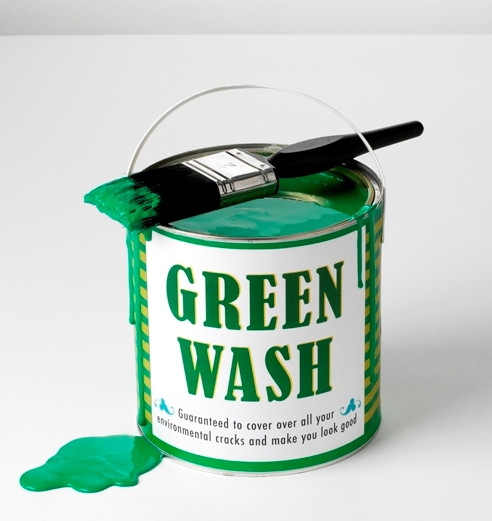During the ‘Milano Fashion Global Summit 2021’ held this past 26-28 October, Claudio Marenzi- President and CEO of Herno- and Jacopo Schettini Gherardini – Executive Director of the Standard Ethics Research Office (the only international rating agency dedicated to sustainability) – took a look at the multiple interpretations and difficulties associated with a theme that is more relevant than ever before: sustainability.
To the Summit, Marenzi brought not only his experience as a businessman and institutional figure, since his roles have included President of SMI, President of Confindustria Moda, as well as current President of Pitti Immagine, but also his experience as an advocate of sustainability. The President of Herno, in fact, was one of the first to speak of sustainability in Italy, when in our country words like ‘Environmental, social and governance’ (ESG) were relatively unknown, and already in 2010, the productive sites of Herno were self-sufficient in terms of energy with zero impact, while in 2014, the company had begun mapping the carbon footprint of its clothing with PEF (Product Environmental Footprint).
Nevertheless, Marenzi confirms that what we have witnessed over the last decade is a ‘pathway’ towards the ideal of sustainability, more than a tout court turning point. This is because sustainability cannot be anything but a continuous and gradual process, which starts from the industry, even before marketing does: sustainability can’t help but start at the beginning of the productive process, from the chemicals, from the possibility to source yarns and fabrics that are sustainable in terms of biodegradability and recyclability. In this sense, there is a temporal displacement between the storytelling and marketing of sustainability and the medium to long times typical of industrial processes needed for transforming sustainability into a concrete reality, even if it is true that Italy is one of the most advanced countries currently going down this pathway.
Sustainability is ‘cool’
“If up until a decade ago it was considered ‘cool’ to be sitting on a 12-cylinder engine, today it is much ‘cooler’ to drive 700 horsepower, which however is electrically powered and silent”: this statement of Marenzi sums up how sustainability today is a topic that is deeply felt and popular also with the general public. In terms of fashion apparel, it’s important to remember that if it is true the sector is the second most polluting worldwide, it is also true that it is constantly exposed to public opinion. This ‘being under the spotlight’ has led the fashion industry, more than any other, to reply to the new needs of consumers above all through pure marketing operations that offer ‘green’ products, thereby exposing themselves to the risk of ‘green washing’. Moreover, as underlined by Schettini, the fashion textile industry is rather complex, because it is made up by a very long supply chain that is extremely diversified from one company to the next, presenting difficult challenges in terms of governance. The world of fashion, however, is gradually aligning itself with ESG guidelines and, according to Schettini, it is capable of facing these new challenges in a way that is more original and innovative than others.
There are no ‘free meals’ in the field of sustainability
If sustainability today is without a doubt ‘cool’, then there is no doubt that it also has an economic cost associated with it: in fact, it requires investments in technologies, new materials, but also in productive processes for the manufacturing of the products themselves. It is however important, as underlined by Marenzi, that these costs do not end up being completely passed on to the end consumer, otherwise the risk is that of ending up in a situation similar to that of ‘organic’ food, which remains a niche market because of the excessively high cost of its products. The extra expenses connected to sustainability should instead be ‘spread out’ over the entire supply chain, and this calls into cause also ‘ethical sustainability’ and the question of what a correct margin and correct profit is, because if businesses exclusively operate with the aim of achieving the greatest profit margin possible, the cost of sustainability cannot be completely offloaded onto the end customer. In fact, a correct EBITDA does not exist today for costs and improvements made in terms of sustainability. The logic should instead be that of reasoning in terms of a reduced margin for companies and investors, in favour of expanding the penetration of sustainable products in the market: this is one of the great challenges for the future.
Shared parameters and reciprocity
The last, but not least important challenge in achieving concrete sustainability is connected to the presence of parameters that are accepted and shared by all, and reciprocity on a global level. As underlined by Marenzi, in Italy, and above all among SMEs there is the tendency to ‘do’, to put into action measures that aim to reduce the impact of mankind on the environment, without however following parameters and certifications that are recognised and shared, so as to align the parts that are business, financial, and market related. There is also a lack of a real reciprocity between the most advanced countries, which are increasingly influenced by strict pollution prevention regulations and environmental and public health protection policies, and countries – like those in Asia – where these regulations do not exist, allowing them to freely sell their products all over the world, while benefitting from unfair competition. It is in fact these countries that pass on the wrong message to consumers that it’s possible to produce sustainable products at a ‘low cost’, when instead the cost of sustainability should be duly recognised and appropriately shared between all the players of the system.



